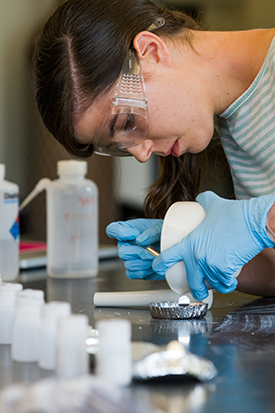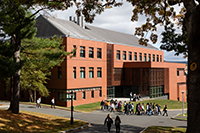About the Geology Major

At that time, Amherst College had a total of 136 students. By 1836 it had grown to 259 students, making it larger than Harvard and slightly smaller than Yale. The College Catalogue of 1826 mentions the courses "Cleaveland's Mineralogy" and "Geology" that were developed by a new teacher, Edward Hitchcock, Professor of Chemistry and Natural History (1825-64).
Today, the Geology department offers courses that tackle some of the planet’s most important issues—water science, climate change and geophysics to name just a few. Geology encompasses many sub-disciplines that approach study of the earth in a variety of ways, but all share a core of knowledge about the composition and constitution of earth materials.
The major starts with an introduction to the fundamental principles and processes that govern the character of the earth from its surface environment to its core. Finally, in consultation with their departmental advisor, Geology majors must take five additional courses from the Department's offerings, constructing an integrated program that may be tailored to the major's fields of interest or future plans.
Courses
All courses are open to any student having requisite experience or consent of the instructor.
Beneski Museum of Natural History











